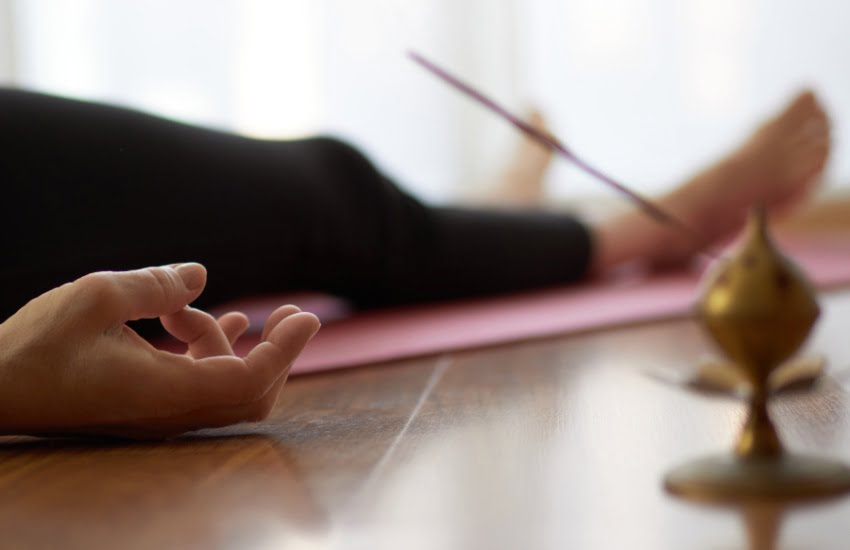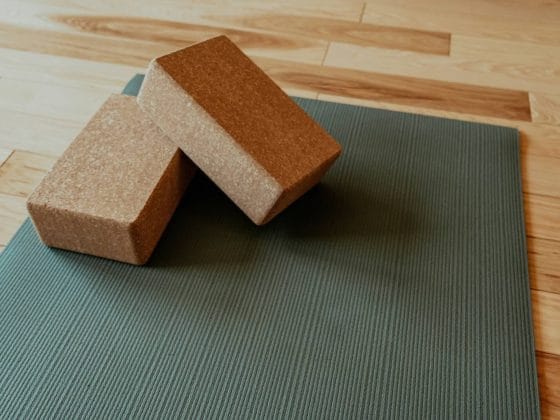You know that feeling when you have just come out of a long savasana (corpse pose) at the end of a glorious asana flow; it is almost as if you had been transported into another realm, away from the density of your physical body, into something lighter, more peaceful, even hypnotic.
Imagine a practice that skips the physical labor of asana and dives straight into a profound guided relaxation. One where afterwards you feel as though you have just had a full night of deep sleep; rested, recharged, free of stress, and genuinely at peace. This is precisely what you can expect from Yoga Nidra, also known as “yogic sleep” or as the scientific community likes to call it, “non-sleep deep rest” or NSDR.
What Exactly is Yoga Nidra?
Yoga Nidra goes beyond conventional meditation, offering a systematic method for deep relaxation, self-discovery, and physical recovery. Originating from ancient yogic traditions, it was popularized by Swami Satyananda Saraswati in the mid-20th century.
The practice involves lying down in a comfortable position, often with the support of several props, closing your eyes, and following the instructions of a trained guide or teacher. As a practitioner, you will then be guided through a systematic process that includes body awareness, breath awareness, and visualization.
Unlike traditional meditation, where the focus is on maintaining awareness, Yoga Nidra aims to transition you into a state between wakefulness and sleep, known as the “hypnagogic” state. In this state, your mind becomes exceptionally receptive, allowing for deep relaxation and an often fascinating exploration of your subconscious mind.
Now you may be thinking this sounds a lot like savasana (corpse pose), and indeed the overall intent of both are essentially the same – rest. However, they both serve distinct purposes. Savasana, often practiced at the end of a yoga asana session, involves lying on your back in a restful pose, allowing your body to absorb the benefits of the preceding physical practice. In contrast, Yoga Nidra is a guided meditation that takes practitioners into a state between
wakefulness and sleep, engaging in a systematic process of body awareness, breath observation, and visualization. While Savasana provides a restful conclusion to the physical practice, Yoga Nidra delves deeper into the realms of consciousness, offering a unique journey of self-exploration and relaxation.

What are the Benefits?
Recent studies suggest that Yoga Nidra can not only induce a state of profound relaxation but it also mimics the physiological benefits associated with deep sleep. A study published in the “International Journal of Yoga Therapy” in 2020 explored the neurophysiological indicators of Yoga Nidra, revealing that the practice activates the parasympathetic nervous system and triggers the relaxation response akin to that observed during deep sleep.
This activation is characterized by reduced sympathetic activity, lower heart rate, and enhanced vagal tone, contributing to an overall sense of calmness and restoration. Additionally, a study in the “Journal of Alternative and Complementary Medicine” in 2017 found that participants practicing Yoga Nidra reported improvements in sleep quality, suggesting that the practice may serve as a valuable tool for those seeking non-pharmaceutical interventions for insomnia.
Furthermore, a 2018 study published in the journal, “Mindfulness,” reports that participants experienced a significant decrease in symptoms of depression and increase in feelings of well-being after engaging in regular Yoga Nidra sessions. And in 2020, the “International Journal of Yoga Therapy” found that those who regularly practice yoga nidra are shown to have improvements in cognitive performance, including better attention, memory, and overall concentration.
If this list of benefits is starting to make Yoga Nidra sounds a bit like snake oil, consider this, there is no part of your body that goes unaffected when you do not get enough rest. In our hyper connected, capitalist world, many of us are burning the candle at both ends between
unrealistic work demands, families, social lives, and the unending allure of social media. Practices like Yoga Nidra, that offer a pragmatic reprieve and allow your body to genuinely rest and restore, will inherently come with a long list of benefits.
Applications in Healthcare
In fact, the accumulating scientific evidence supporting the benefits of Yoga Nidra has prompted its integration into various healthcare settings. Some hospitals and wellness centers now incorporate Yoga Nidra as part of therapeutic interventions for patients dealing with conditions such as chronic pain, post-traumatic stress disorder (PTSD), and cardiovascular issues.
In a clinical setting, trained professionals guide patients through personalized Yoga Nidra sessions, adapting the practice to address the patient’s specific health concerns. This approach enhances the therapeutic effectiveness of Yoga Nidra, making it a valuable tool in the holistic treatment of various health conditions.
How to Build Your Own Practice
If you are new to Yoga Nidra, there are a variety of resources available to guide you through the practice. You might begin by checking the class schedule at your local yoga studios to see if there are any upcoming classes in person.
If in-person offerings are not available, there are numerous mobile apps like Insight Timer, Calm, and Headspace offer a selection of guided Yoga Nidra sessions suitable for beginners and seasoned practitioners. Online platforms such as YouTube also host a plethora of guided practices from experienced instructors. Or if you would like to learn more about the history and philosophy of Yoga Nidra, books like “Yoga Nidra” by Swami Satyananda Saraswati and “The Art of Relaxation” by Richard Miller provide in-depth insights into the practice and its benefits.
Exploring the different resources will allow you to find a style and voice that resonates with you, facilitating a more personalized and enjoyable Yoga Nidra experience.

The Best Time of Day to Practice
The short answer is whatever time works best for you and your schedule. That said, the ideal times for practicing Yoga Nidra are typically during the transitions between wakefulness and sleep – mornings upon waking or in the evening before bedtime. In the morning, Yoga Nidra can set a positive tone for the day ahead, promoting clarity and focus. In the evening, it serves as an excellent way to unwind, release accumulated tension, and prepare the mind and body for a restful night’s sleep.
Additionally, Yoga Nidra can be a powerful intervention if you are having an abnormally stressful day or are feeling consumed with ruminating thoughts. In this case, you might choose to practice mid-day as a way to reset before an entire day goes by.
Consistency is key, so choose a time that aligns with your daily routine and commit to making Yoga Nidra a regular part of your self-care practice.
In Summary
Yoga Nidra, with its roots in ancient yogic traditions, has emerged as a potent tool for promoting deep relaxation and well-being in the modern world. The scientific exploration of its benefits over the past decade have provided valuable insights into its positive effects on stress reduction, sleep quality, emotional well-being, cognitive function, and the mind-body connection.
As we navigate the challenges of contemporary life, the practice of Yoga Nidra is an accessible tool for restoration and self-discovery. Whether incorporated into daily routines, utilized in therapeutic settings, or explored in wellness programs, the evidence supporting its transformative power continues to grow. Embracing the ancient wisdom of Yoga Nidra offers a pathway to enhanced health and resilience in the face of life’s demands.
References:
Telles, S., Singh, N., & Balkrishna, A. (2019). A Comprehensive Review of the Psychological Effects of Yoga with a Critical Insight into the Meditative State Mediated by the Anterior Cingulate Cortex. Journal of Clinical Psychology, 75(6), 995–1005.
Khalsa, S. B. S., & Cope, S. (2017). Effects of a yoga lifestyle intervention on performance-related characteristics of musicians: A preliminary study. Medical Science Monitor Basic Research, 23, 304–312.
Patel, N. K., & Newstead, A. H. (2018). Yoga Nidra and Positive Emotions: A Self-Report Study. Mindfulness, 9(2), 450–458.
Menezes, C. B., Pereira, V. R., & Pereira, A. (2020). Yoga Nidra and Neurophysiological Indicators: A Pilot Study. International Journal of Yoga Therapy, 30(1), 87–94.



